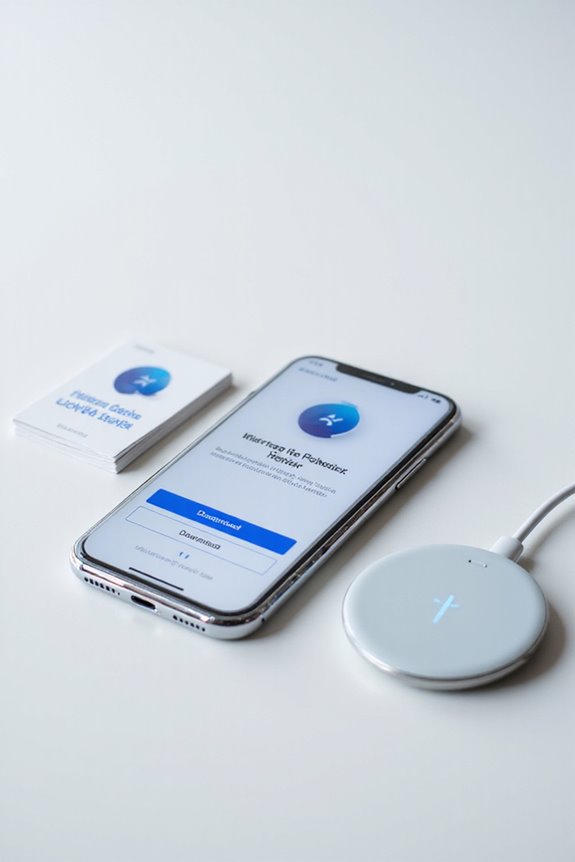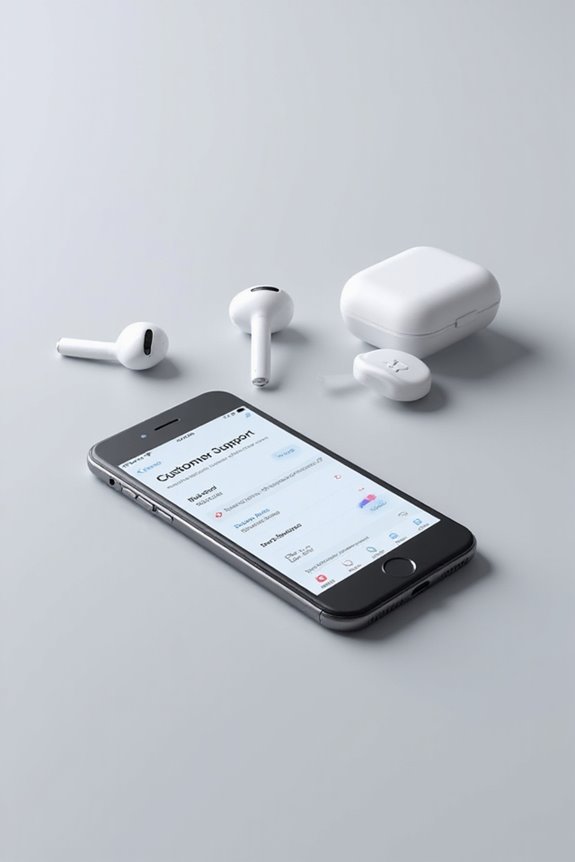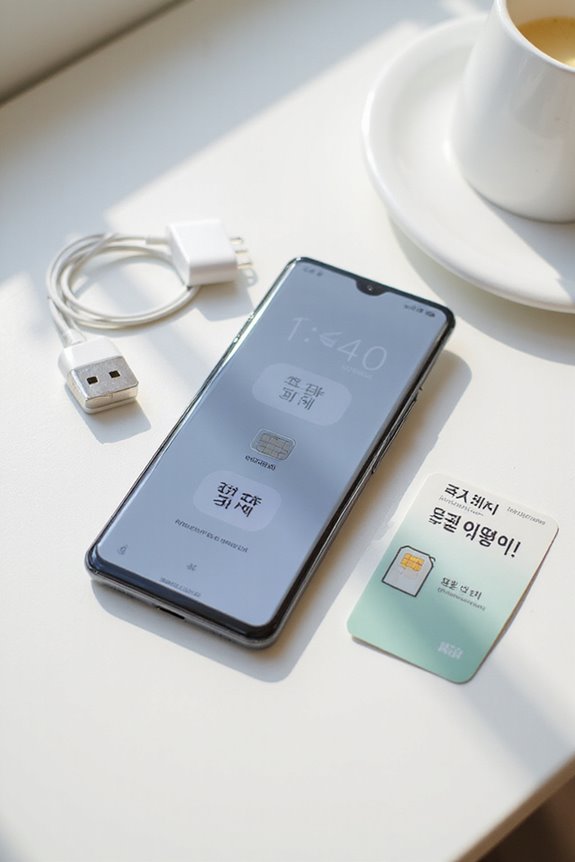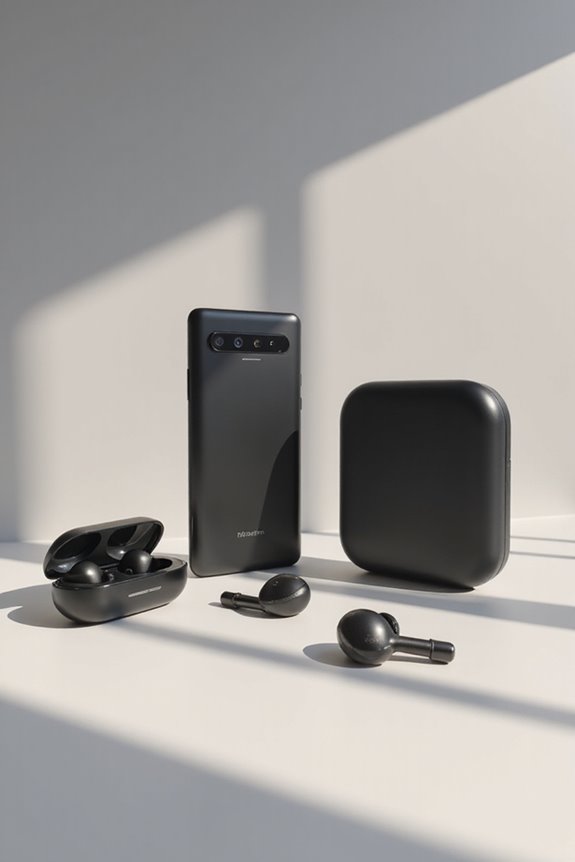To install Korean mobile apps, we need to update our Apple ID region by guiding through Settings and adjusting the Language & Region. It’s essential to cancel any current subscriptions, and we must set a South Korean billing address and payment method. Additionally, many apps require a Korean phone number for verification, which may necessitate obtaining a local SIM. If we encounter challenges, exploring tools and strategies available in the market can help streamline this process.
Key Takeaways
- Change your Apple ID region settings to South Korea via your device’s settings to access the Korean App Store.
- Cancel any active subscriptions before changing the region to prevent errors during the process.
- Update your billing address and payment method to a valid South Korean option for successful app purchases.
- Use APK downloaders like APKPure or QooApp if you’re unable to access apps through the official store.
- Consider obtaining a local Korean phone number for verification requirements of many Korean apps.
Essential Korean Apps to Consider
When exploring the vast landscape of mobile applications in South Korea, several essential apps stand out due to their popularity and functionality. KakaoTalk, as the dominant platform for popular messaging, integrates multiple services like mobile banking through KakaoBank and payments via KakaoPay, making it an all-in-one communication tool. For those interested in local marketplaces, Karrot effectively connects users for peer-to-peer buying and selling. In addition, Naver Webtoon and Naver Blog are pivotal for digital storytelling, allowing individuals to share creative content. Additionally, the Toss app facilitates simpler personal finance management, capturing the banking needs of younger users. These apps illustrate the diverse functionalities available, catering to various aspects of daily life in South Korea.
Steps to Access the App Store
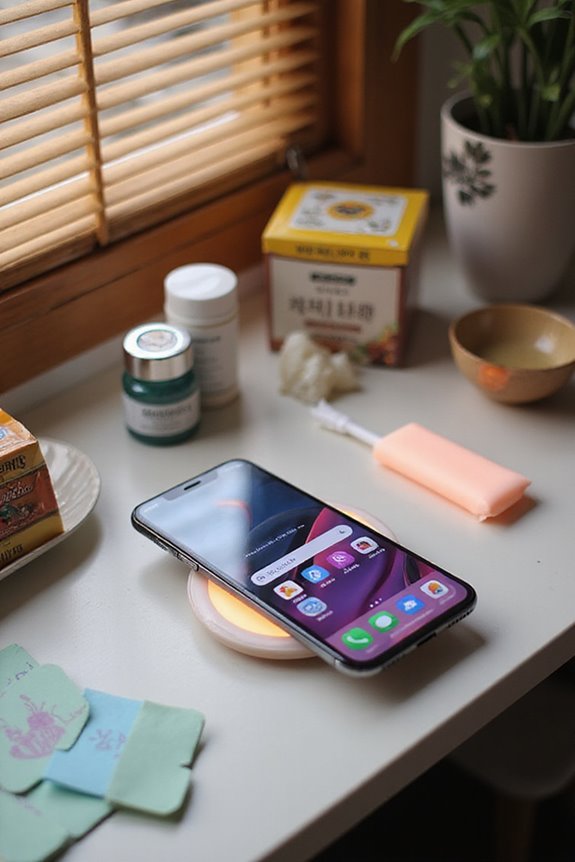
Accessing the Korean App Store requires some specific steps to secure a smooth experience. First, we need to change the region settings of our Apple ID to South Korea. We do this by making our way to Settings, then General, and selecting Language & Region. It’s crucial to confirm we cancel any active Apple subscriptions, as subscriptions must be expired before changing the region. Next, we must update our billing address and payment method to a valid South Korean option, confirming our Apple ID is recognized for the Korean Store. If we encounter persistent region error messages, contacting Apple Support can help resolve these issues, allowing us to fully access and enjoy Korean apps from the App Store.
Ensuring Language Support
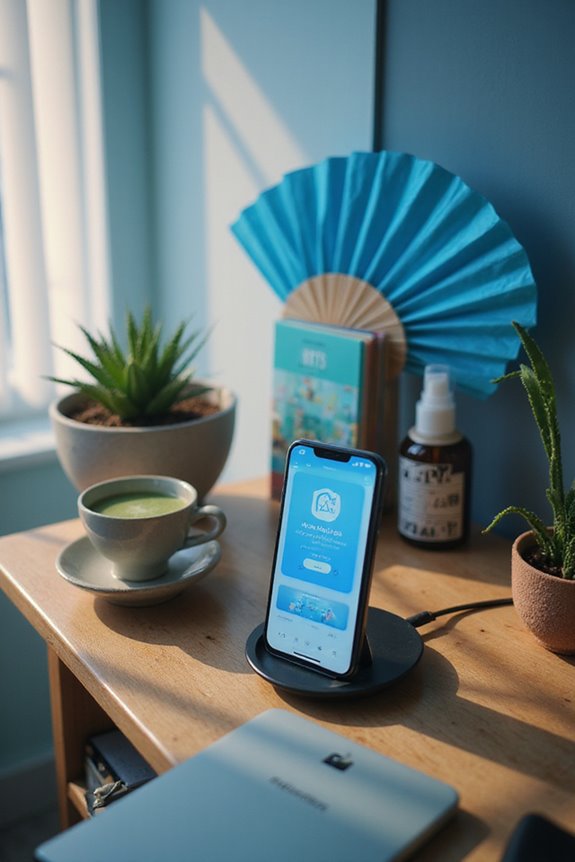
To guarantee that Korean mobile apps resonate with users, we must prioritize effective language support, which involves full localization tailored to the Korean audience. Most users prefer content in their native language, Hangul, so accurate translations are essential. Incorporating the right font, such as *Dodum* or *Nanum*, improves readability and user experience. Additionally, we should implement localization strategies that consider grammar nuances, like proper number sequencing, to assure clarity. With Android 13, users can choose language preferences for individual apps, enhancing personalization. By collaborating with native Korean speakers, we can guarantee culturally appropriate phrasing and accurate translations. These practices ultimately lead to a more engaging and user-friendly experience in Korean mobile applications. Furthermore, integrating educational products like flashcards can reinforce vocabulary retention and support language learning.
Handling International Number Verification
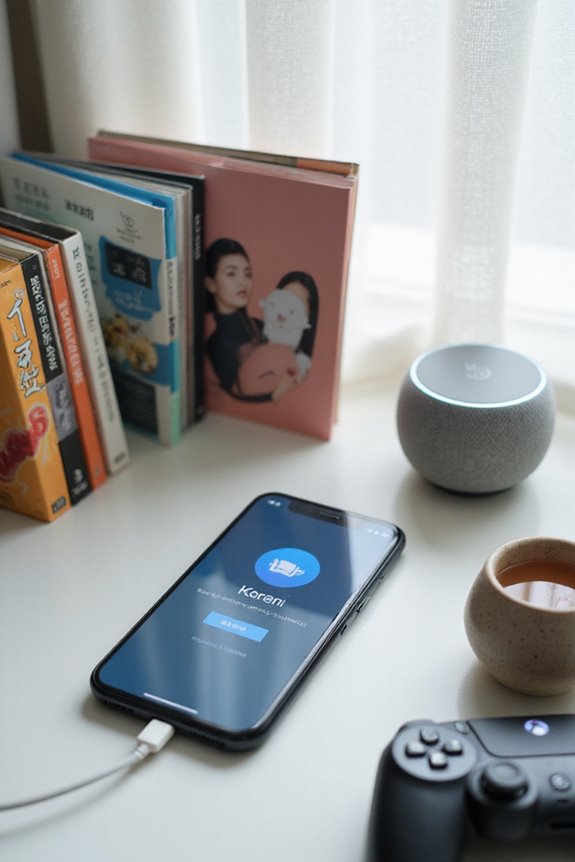
Maneuvering international number verification can be challenging, especially for users attempting to access Korean mobile apps. Most apps require a Korean phone number for identity verification, blocking access to functions without it. This strict requirement stems from local regulations emphasizing security through domestic telecom integration. For expatriates or international students, the barriers can be significant, as many platforms are inaccessible without passing local mobile verification. Although some users try expensive workarounds, like international roaming or eSIM services, these aren’t officially supported. A viable solution for short-term visitors is to purchase a local SIM card, but these often don’t support SMS-OTP messages needed for verification. Consequently, obtaining a Korean number remains critical for effective international number verification.
Using Translation Tools for Better Understanding
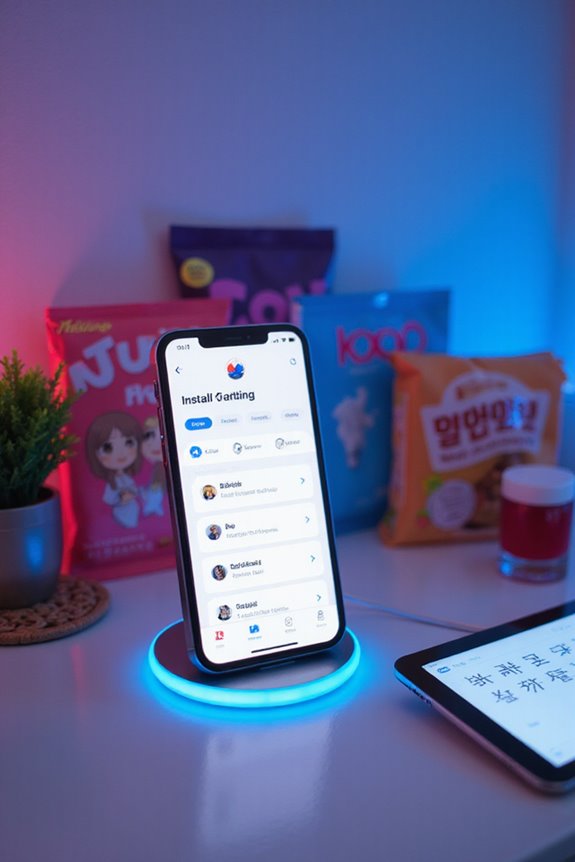
Understanding the complexities of language can greatly improve our experience with Korean mobile apps, especially since translation tools have become essential for users traversing unfamiliar content. Utilizing machine translation, such as GPT-4 or DeepL, allows us to navigate intricate app features and texts efficiently. For quick interactions, we can opt for voice translation apps like VoiceTra, which support real-time conversations. However, being aware of translation limitations is vital; while tools offer rapid understanding, they may miss cultural nuances. By combining several tools, we can enhance our user experience, ensuring more accurate translations. Ultimately, leveraging these resources empowers us to fully engage with Korean apps and reduces frustration during our interactions.
VPN Considerations for Region-Locked Apps
While accessing Korean mobile apps can be challenging due to regional restrictions, using a Virtual Private Network (VPN) can simplify this process considerably. A reliable VPN allows us to bypass these restrictions, giving us access to apps that may not be available outside Korea. It’s crucial to choose VPN features such as multiple servers in South Korea, which guarantee we maintain a stable Korean IP address. Additionally, utilizing strong connection protocols, like AES-256 encryption, enhances our data security and privacy. Connecting through a VPN also protects our information on public Wi-Fi networks. By thoroughly researching VPN providers known for supporting Korean content, we can guarantee a smooth and secure experience when downloading and installing the apps we need.
Tools for Installing Apps
Once we’ve addressed the VPN considerations necessary for accessing Korean content, we can turn our attention to the various tools available for installing the apps themselves. We can utilize APK downloaders, like APKPure and QooApp, which provide access to Korean apps often restricted by region. APK extraction tools allow us to save app files from our devices for backup or sharing, while app rollback functions help manage outdated versions that some Korean services may distribute. Additionally, using app managers can streamline the installation process, especially for security apps commonly required by Korean banking services. It’s important to proceed cautiously with alternative app stores to avoid potential security risks associated with malicious software. Proper setup is essential for effective app installation.
Overcoming Common Challenges
Maneuvering the landscape of Korean mobile app installations presents several common challenges that, if addressed, can enhance our experience considerably. One significant hurdle is the regional availability of apps, as many are locked to specific Korean accounts. Employing effective localization strategies is crucial for improving user engagement; Korean users often prefer apps with content in Hangul and culturally relevant material. Additionally, security and authentication requirements can be convoluted, particularly with multiple security apps needed for banking apps, complicating installation. Addressing legal compliance is essential too, as non-compliance could lead to the removal of apps from stores. By maneuvering through these challenges thoughtfully, we can guarantee a smoother experience with Korean mobile applications.
Future Trends in Korean Mobile Apps
As we look to the future, it’s essential to recognize the major trends shaping the landscape of Korean mobile apps. We can expect near-universal mobile payment integration, with projections indicating that 98% of South Koreans will utilize digital wallets by 2025. This shift will enhance future payment trends, favoring QR code payments due to lower costs for small merchants. Additionally, mobile app innovations are emerging with foldable devices alongside 5G technology, enabling ultra-HD streaming and real-time functionalities. The rise of augmented and virtual reality will revolutionize user experiences in e-commerce. Moreover, the development of super apps, integrating various services like payment and messaging, demonstrates the movement toward consolidated ecosystems to streamline user engagement and simplify transactions for all users.
Frequently Asked Questions
Are There Offline Versions of These Korean Apps Available?
Unfortunately, most popular Korean apps lack offline functionality. While some have limited app availability for offline use, essential features like messaging and navigation typically require internet access. We can always prepare by pre-downloading necessary content.
How Do I Change the App Language Settings?
When we’re changing app language settings, we should explore language preferences within the app itself. Good app localization guarantees better usability, so let’s look for options that enhance our overall experience in using the app.
Can I Use the Apps Without a Korean SIM Card?
Yes, we can use various Korean apps without a Korean SIM card. Many Korean app alternatives are compatible for foreigners, allowing us to access essential services while utilizing international payment methods and registration options.
What Should I Do if an App Crashes During Installation?
When an app crashes during installation, we might need to dance around app compatibility issues. Let’s embrace some installation troubleshooting tips: clear storage, check settings, or even try a friendly restart to refresh everything.
How Do I Uninstall a Korean App Once Installed?
When we want to remove a Korean app, we can explore various uninstall methods through app management settings. By maneuvering through our device’s settings, we can easily uninstall unwanted apps and streamline our experience.

